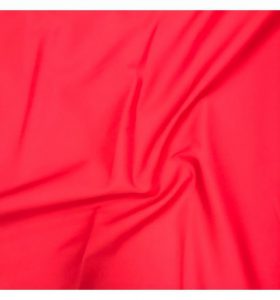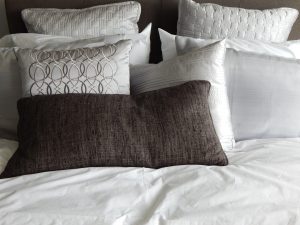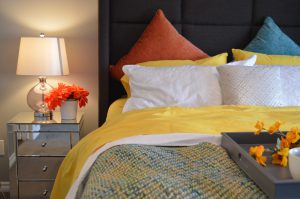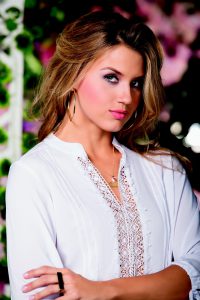Polycotton is made up of a percentage of cotton and another percentage of polyester creating this combination fabric. The usage would depend on the percentage of each material, as different combinations would give a different finish and have different properties.
Cotton is a natural staple fibre made from the cotton plant that is a shrub native to the hotter climates such as Central America, South America, Africa, the Arab peninsula and Asia. The fibres are spun, dyed and woven to create cotton.
Polyester is a man made fabric using synthetic and natural plant cuticles to create a new fabric that has imitated other natural fabrics but with better qualities or more advantages.
The two combined create a semi natural fabric that will have more advantages then just cotton, as the polyester can help with waterproofing or insulating the fabric. Also it can help with protection qualities such as strength and making it abrasion resistant.


Different types of poly-cotton fabrics
There are different types of poly-cotton combinations and they have different properties, here is a list of a few including their properties.
Budget poly cotton
Is a cheaper poly-cotton made up for mainly polyester eg. 65% polyester and a 35% make up of cotton, so it has the best of both qualities and it can be produced cheaply due to the mass-market production of synthetic fabrics, making it a great advantage for use on budget projects and if you’re in need of a basic fabric as a plain canvas.
This fabric can be used for basic curtain lining due to the opacity and heavier weight than natural cotton or some synthetic fabrics, it can create a great curtain drape and structure. Larger contract projects can use budget poly-cotton in tents or marquees as a basic backdrop or as lining to drape a fabric or upholstery.
Many also use this fabric to test prints like digital printing to test the colours and composition. Testing dyes and embroidery is also a good use for this fabric as it is cheap and has a blank canvas ready to play around with.
Three hole boderie
Also known as English embroidery, this is another example of the poly-cotton blend. There are many variations of this fabric they can vary from 65% polyester to 95% giving the fabric a different feel and weight with the different blends.
The fabric itself has some embroidery with some cut out work of three holes to create a small floral detail within the fabric itself. It can be used for dresses, blouses, and upholstery such as cushion covers or wall hangings. Many also use this fabric for bedding and throws for interior, as it has a soft English traditional design.
Uses/Application
General use for this fabric include the following:
- Upholstery
- Cushion covers
- Wall hangings
- Quilts
- Bedding/throws
- Apparel
- Dresses
- Shirts/blouses
- Summer skirts
- Scarves


Conclusion
Poly-cotton can come in different forms and blends so each type is best suited to a particular need or application. Feeling or looking at the fabric and seeing the drape, the weight or the texture can test this.
There are many uses for poly-cotton from interiors to apparel so it can be used on many projects with ease due to the price point of the fabric. It is also easily accessed as it is mass-produced and a common fabric to be found so it is a great fabric to work with.